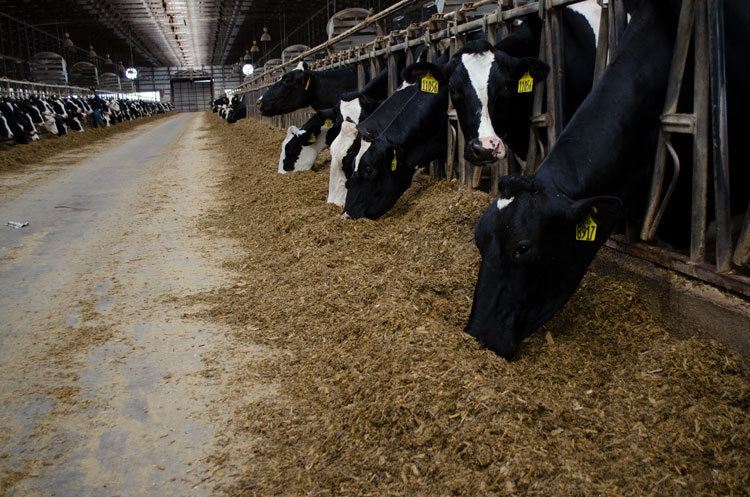
The concept is simple.
If you are one of those farms that harvested less than ideal quality forages this spring because of muddy fields or any number of other factors, you might still be able to feed it successfully.
What are we talking about?
Recent research from Miner Institute explored the interaction of undigested neutral detergent fiber (uNDF240) with physically effective fiber (particle size). What they found has practical application in situations where farms have copious amounts of low-quality forage.
Specifically, the researchers led by Rick Grant, president of Miner Institute, and Master’s student Wyatt Smith found that forage with higher uNDF240 values than desired could be metered by chopping that forage more finely.
In the study, they compared four diets. One had high uNDF240 and longer forage particle size, the second diet had high uNDF240 and smaller forage particle size, the third was low uNDF240 and longer forage particle size, and the final had low uNDF240 and short forage particles.
Although the second and third diets were unalike in composition, the cows performed nearly identically on the two rations when comparing dry matter intake (60 pounds per day), energy-corrected milk production (100 to 102 pounds per day), eating time (260 to 280 minutes per day), and rumination (530 minutes per day).
Bringing it back to this year
At the recent Four-State Dairy Nutrition and Management Conference earlier this month, the poor weather conditions were top of the mind and the beginning of many conversations. During his presentation, Grant hypothesized that the study’s conclusions could be applied to some of these high uNDF240 forages that were harvested this spring.
“If forage uNDF240 (undigested neutral detergent fiber at 240) is higher than desired, can we partially compensate for that by chopping the feed more finely?” Grant posed the question to the crowd. “If you have stuff that’s just gotten away from you, but it’s still moderate, maybe low moderate quality, yeah you can shorten chop length, get it packed in, get a good fermentation. I think it’s something we need to be thinking about.”








